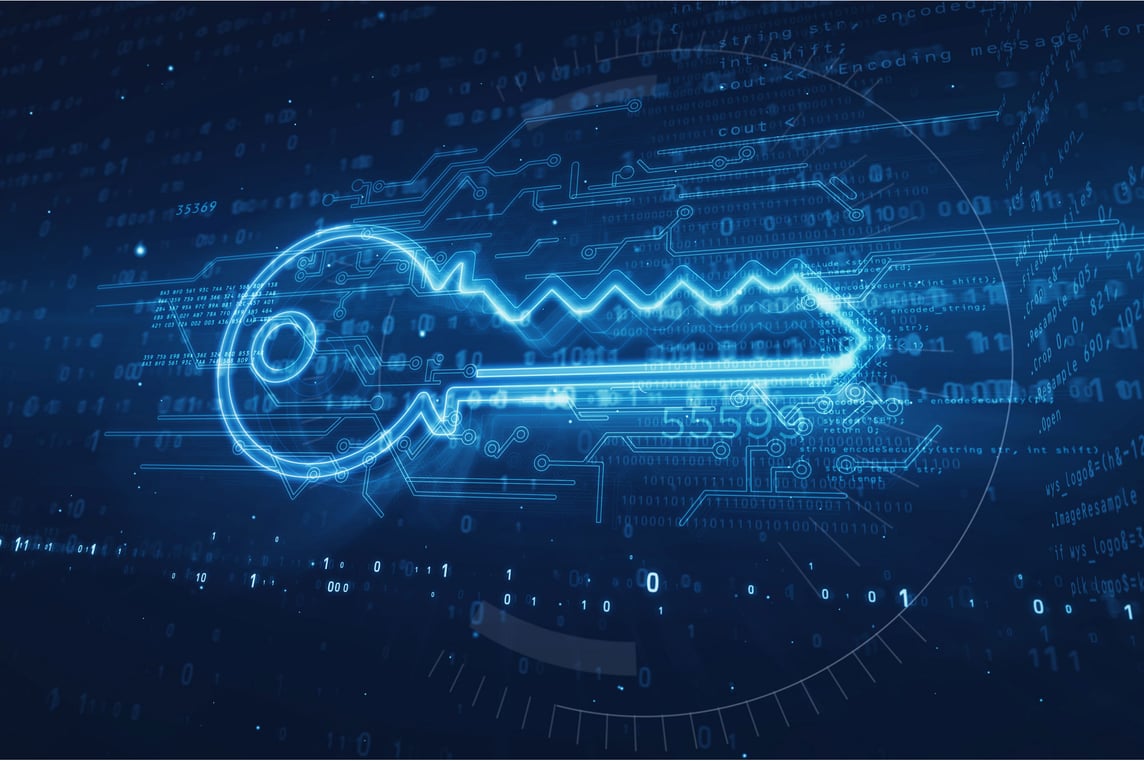Fortinet Acquires Next DLP Strengthens its Top-Tier Unified SASE Solution
Read the release

Data is a company’s most valuable asset, and businesses rely on the quality of that data to remain competitive with rivals. Losing access to enterprise data or allowing it to fall into the wrong hands must be avoided at all costs, and, consequently, companies will utilize multiple tools that can work together to protect sensitive and high-risk information.
Protecting enterprise data resources is a priority that has spawned the creation of large cybersecurity teams and many different tools and solutions. In this article, we’ll take a look at one of those solutions — data protection management — and why its implementation is crucial to keep your business information safe.
In this article:
Data protection management (DPM) is the management and monitoring of the data protection services used to secure information in a computing environment. DPM employs a combination of multiple tools, techniques, and methodologies to verify that all data protection processes are performed successfully.
On one level, DPM can be seen as a mindset that incorporates best practices to ensure that all data resources are effectively protected. In the past, a manual management approach may have been sufficient when dealing with an extremely simple infrastructure and basic data protection solutions. However, this is no longer the case.
With the addition of cloud resources, infrastructures become more complex and diverse, making it difficult to manage manually. Today’s companies face the challenge of managing data silos, dispersed data, and decentralized systems. The value of enterprise data and the regulatory compliance that is often required when handling sensitive information require efficient tools to ensure data protection.
A data protection management system (DPMS) is a framework that enables a company to establish an effective data protection infrastructure. A DPMS is also a repository for rules and regulations that govern how data is handled and protected throughout an organization. These solutions also promote compliance with the data protection guidelines enforced on regulated industries.
Effective data protection management should include:
The value of enterprise data, regulatory requirements, penalties and fines for non-compliance, reputation damage, and business interruption are just a few of the reasons data protection management is important.
Today’s data protection measures are not set-it-and-forget-it. The constantly changing nature of enterprise infrastructure and security perimeters, the rate at which data is ingested and created, and the evolving threat landscape require active management of data protection strategies.
Without DPM, companies risk data breaches, data loss, and potential disruption of critical business activities. Following are some of the impacts of failed or ineffective data protection management.
There is a strong, complementary relationship between DPM and data loss prevention (DLP) tools. DPM supports the management of backup processes to ensure data recovery in the event of a breach or disaster. With a robust DPMS in place, companies should be confident they have the data they need to respond to an emergency.
DPMS solutions also provide evidence of compliance with regulatory data protection standards. Audits initiated to ensure compliance with regulations such as HIPAA or GDPR require companies to prove they have implemented effective data protection measures and that they’re constantly monitoring those measures to ensure continued effectiveness. Failure to meet the requirements can lead to substantial fines and reputational damage.
DPMS solutions primarily address the protection of data within the company’s infrastructure and cloud resources. Backups are performed on data resources when they are at rest. They offer protection against data loss or corruption but do not address the misuse of sensitive information, which is one of the most essential components of data protection.
A DLP solution is focused on protecting the way data is used by individuals or applications. It addresses the protection of data in use and in transit by dynamically classifying the information and enforcing an organization’s data handling policy. Encryption and authentication methods are used to ensure that data at rest is only accessed by authorized users. Examples of how a DLP tool automatically performs activities that protect data include:
The Reveal Platform by Next is a cloud-native DLP platform that provides companies with flexibility and immediate visibility into data resources. It classifies data as it is created or ingested into the environment so it can be afforded the level of protection it warrants.
Reveal also deploys next-gen endpoint agents that deliver machine learning on infrastructure endpoints. It baselines activity at deployment and defines typical versus anomalous behavior with advanced analytical algorithms. The tool also provides instructive user training at the point of risk to raise the cybersecurity awareness of everyone who handles data resources.
Make Reveal an essential component of your data security posture. Contact Next and book a demo to learn how Reveal works hand-in-hand with your existing data protection measures to keep your data secure. If you’re interested in assessing the effectiveness of your existing DLP policies, use our easy DLP Policy Testing Tool.
A DPMS framework helps organizations establish data protection infrastructure. The DPMS is the repository of rules and regulations governing data handling and protection in the organization. It also promotes compliance with data protection guidelines.
The framework provides measures for assessing the effectiveness of data protection policies, visibility into infrastructure issues, alerts for cybersecurity teams, response protocols for addressing risks, and comprehensive monitoring and reporting capabilities.
Companies risk breaches, data loss, and potential business disruptions without DPM. Organizations invest in data protection management for several reasons, including:
Both DPM and DLP are tools for comprehensive data security. DPM focuses on managing backups to ensure data recovery and compliance. It addresses data protection within the company’s infrastructure and cloud resources, mainly focusing on protections for data at rest.
A DLP protects data in use and in transit by classifying information and enforcing data handling policies. It also uses encryption and authentication protocols to prevent unauthorized access or misuse.
All DPMS solutions should offer features for:

Blog

Blog

Blog

Blog

Resources

Resources

Resources

Resources
